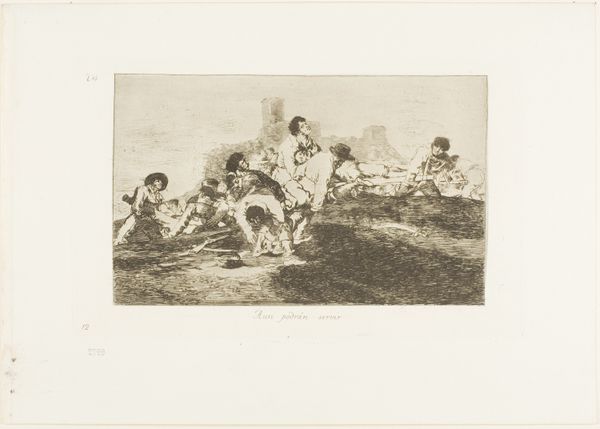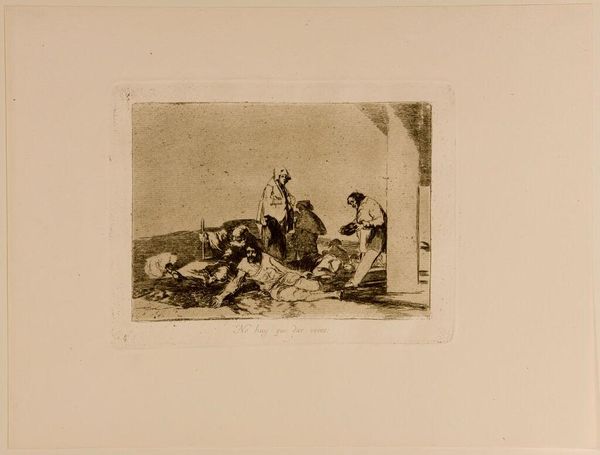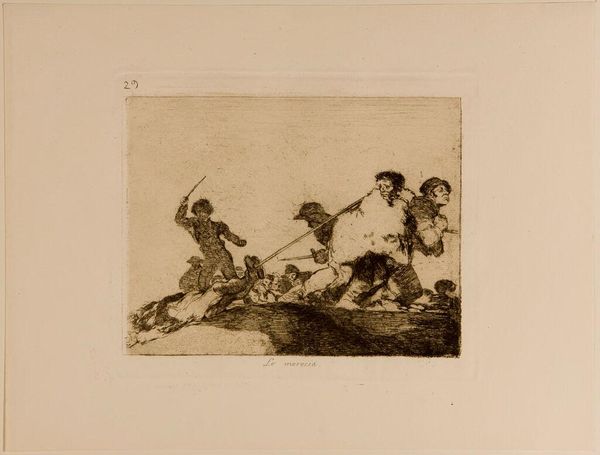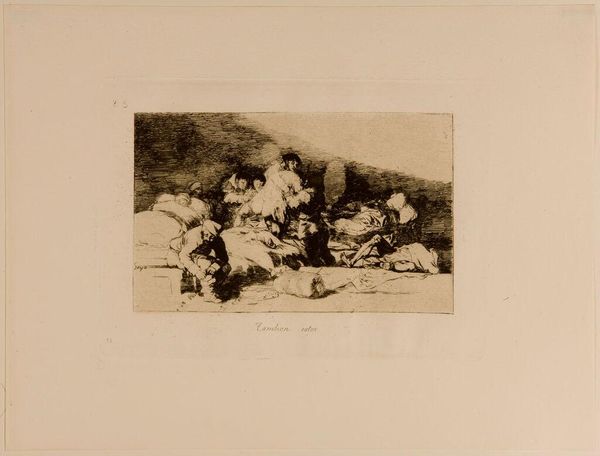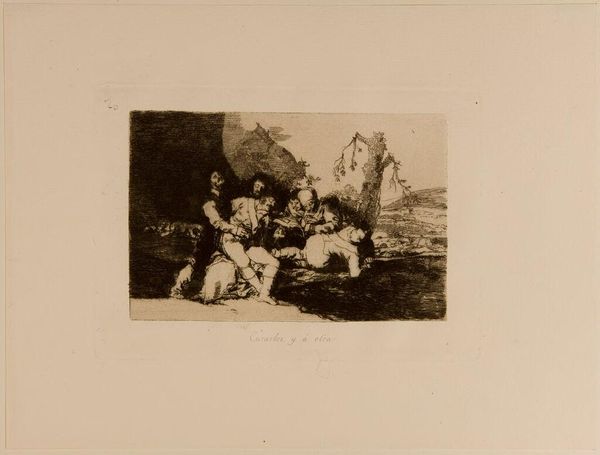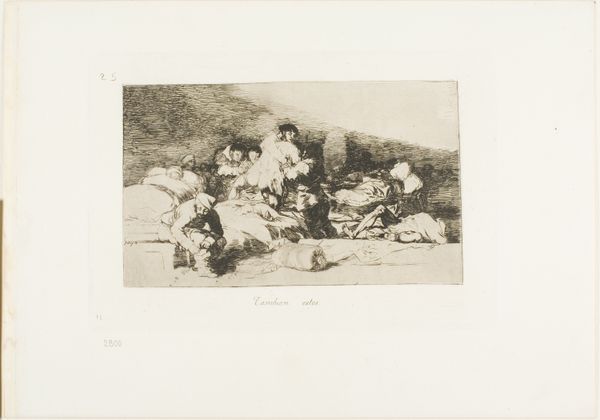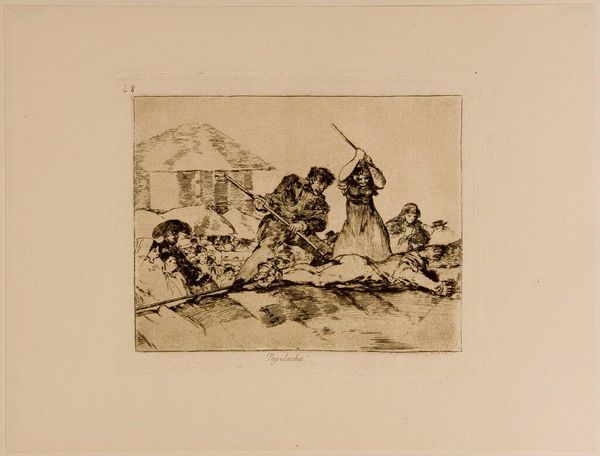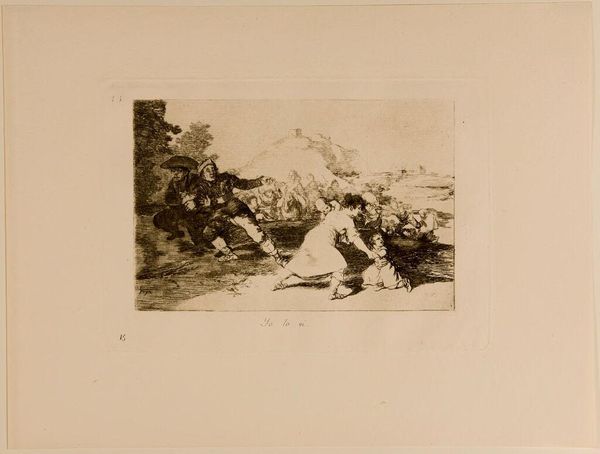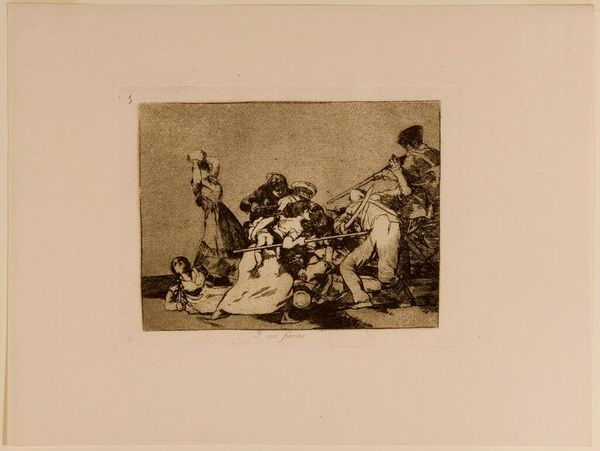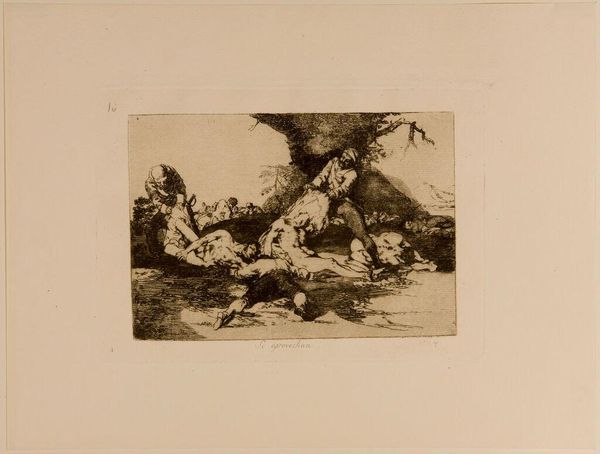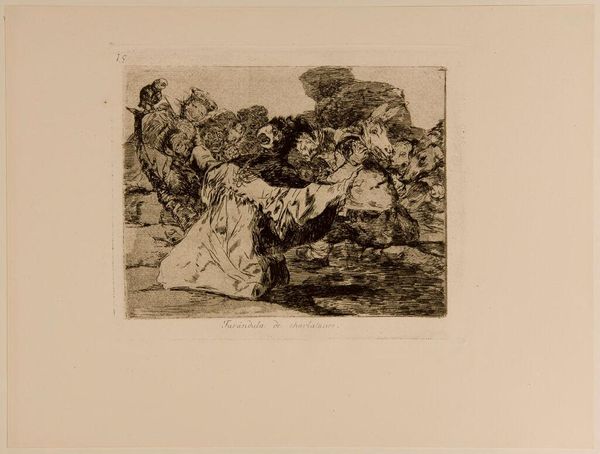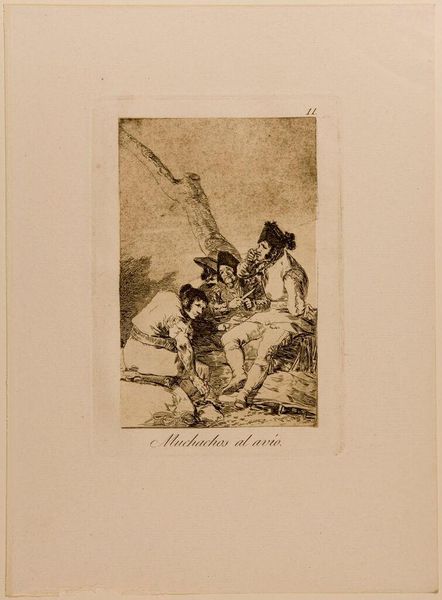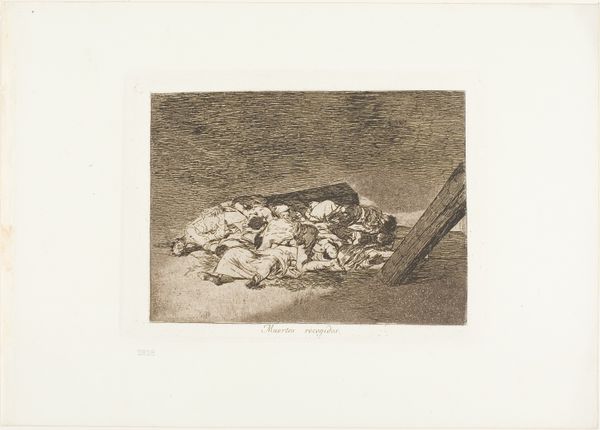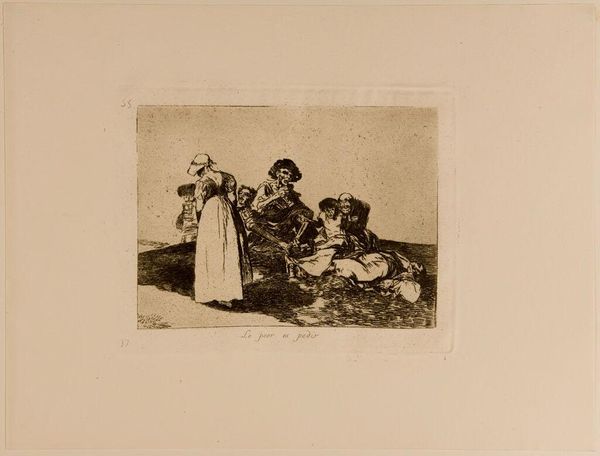
Copyright: CC0 1.0
Curator: Looking at this print, "They Can Still Be Useful," by Francisco José de Goya y Lucientes, I'm struck by the immediate bleakness of the scene. Editor: The way the figures are contorted, almost piled on top of each other, suggests a deep psychological and spiritual wound. It's a tableau of despair. Curator: Goya made this as part of his "Disasters of War" series, a response to the Peninsular War. It's interesting how he's showing us not only the immediate violence but the aftermath, the human cost. Editor: Precisely, and "useful" for what? The title is chilling in its irony, suggesting a complete degradation of human worth. Are they useful as corpses to be scavenged, or are they still resisting? Curator: The figures become symbols for a larger sociopolitical commentary. Their poses, the absence of heroic gestures - everything conveys a sense of futility under the weight of history. Editor: I see how Goya uses these figures to underscore the emotional reality of war as a kind of dark mirror, reflecting back the horrors of inhumanity to a culture grappling with its own brutality. It is a stark cultural memory. Curator: Indeed, by depicting the war’s brutal impact, Goya captured a critical moment for Spain in its struggle against Napoleon and the public role of the artwork as a socio-political critique. Editor: Understanding that history gives the image all the more symbolic power. It's a testament to art's ability to hold cultural meaning over time.
Comments
No comments
Be the first to comment and join the conversation on the ultimate creative platform.
